Meg Mackintosh Solves Seven American History Mysteries (3 page)
Read Meg Mackintosh Solves Seven American History Mysteries Online
Authors: Lucinda Landon

“What's so important about two stones?” Meg said, scratching her head.
How might stones have been important in early America?
Meg began writing in her notebook. “Here are some possible uses for stones,” she said, showing Peter her list. “Since the stone belonged to a child, they might have been used for playing some simple game like marbles.”
“Mmm, maybe. They're certainly not shaped like an arrowhead.”
“Maybe it's a piece of Plimoth Rock,” Meg joked.

“Speaking of Plimoth Rock, here it is,” Gramps called from the front seat.
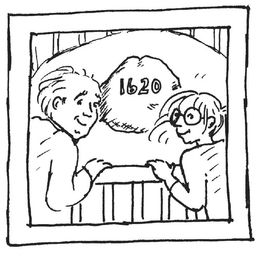
They got out of the minivan and walked over to view the fenced-in piece of history.
“Well, the two pieces don't look like Plimoth Rock at all,” said Peter. “It's not as big as I imagined,” Peter commented as he pulled his camera out of his knap sack.
“Apparently Plimoth Rock has been moved and broken a few times,” Meg read from guidebook.
“History isn't always what you think,” said Gramps. “Come on, Plimoth Plantation is right down the road. They have lots of historic information there.”
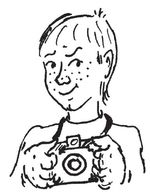
“But how will we be able to figure out a mystery that happened over three hundred years ago?” wondered Peter as he snapped a photo.
How would you search for clues?
A few minutes later they arrived at Plimoth Plantation, a re-creation of the original Pilgrim settlement.
“This is a living museum of Plimoth in the 1600s,” Gramps explained to them. “The people you see dressed in Pilgrim clothes re-enact life in the village. There is a re-creation of a Wampanoag village nearby. Every detail of daily life is portrayed accurately.”
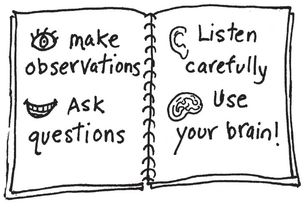
“I really feel like I've stepped back in time,” Meg said as they walked through the rustic village and its buildings.
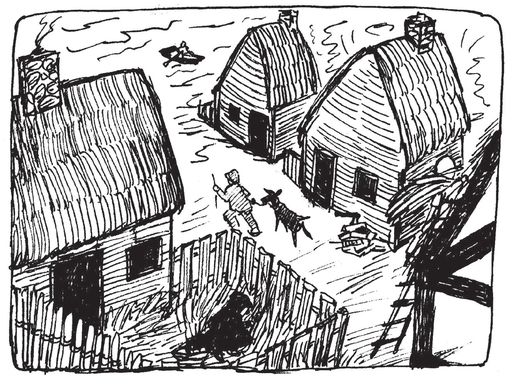
Look at the picture above. If you were a child living in Plimoth in the 1620s, how might your life be different from the way it is today?
“The winter months were particularly hard on the Pilgrims,” Gramps told them as they stepped into one of the small wooden houses. The ceilings were low and the small rooms dark, lit by only one window. “Many of the Pilgrims didn't survive the first year. They probably weren't prepared for the harsh winters.”
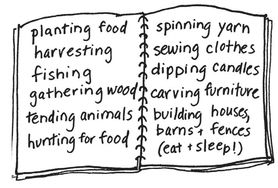
“Were the winters very bad?” Peter asked a Pilgrim woman who was building a fire on the massive hearth.
“Ah yes, fierce storms. It was all we could do to keep the fires burning,” she said, speaking in old-fashioned English. Gramps' eyes twinkled. He went back outside.
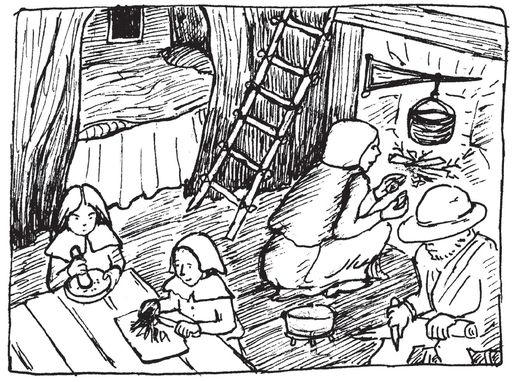
“Can you imagine spending your whole day looking for dry kindling?” Peter whispered to Meg.
“Peter, that's it!” said Meg. “That's what the two stones are for!”
What do you think the stones were for?
“Look how she lights the fire!” Meg exclaimed. “She struck two stones together.”
“You're right! The stones must be pieces of flint!” Peter exclaimed, and they ducked out the door.
They found Gramps waiting on a bench nearby and told him what they had discovered about the stones.
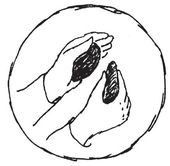
“Good work! And here's some more information for you.” He showed them a page in a guidebook. “It's a list of some of the children who participated in the 1621 Thanksgiving feast.”
“These names are a little strange,” commented Peter. “They'd probably think the same of some of our names today, right Nutmeg?”
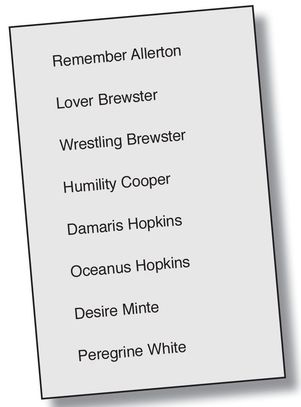
Does any name match one on the mystery-child list?
“None of the names match the list Professor Brown gave us,” said Meg. “But one of the names he gave us is unusual â Anockus â maybe it's a Native American name.”
“It's possible,” said Peter. “But to find out for sure we should go to the Wampanoag village. Maybe they can decipher this.”
At the Wampanoag village, Meg showed the leather pouch to one of the Wampanoag boys. He handled it with great respect.
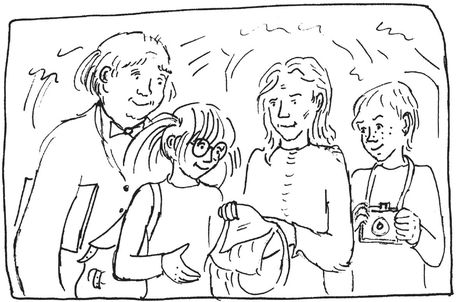
“This pouch is what we sometimes call a friendship bag, and it is definitely a very old one. We keep important belongings in the pouch.” He unfolded the deerskin and gazed at the two stones.
